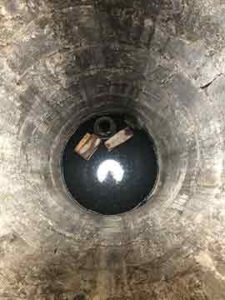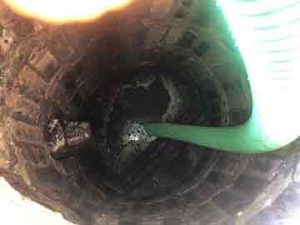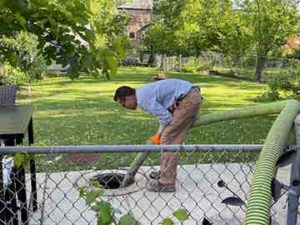A catch basin (storm drain, storm sewer, or storm water drainage) is an essential part of the drainage system for your property and city. A catch basin is a hole in the storm drain system that opens out to the street. It has a curb inlet (metal grate at the street level) and a sump pump at the bottom.
The grate is designed to trap debris while the sump holds sediment. The catch basin also has inlet and outlet pipes on two opposing sides. It connects to the larger underground drainage system for your city. Its job is to maintain proper drainage on the street and your property.
 Importance of catch basins
Importance of catch basins
- Catch basins act as a pre-treatment phase in the storm drain/sewer system. They help to trap sediment and large debris that would have entered the system. Catch basins lower the risk of the sewer or drain system getting clogged and losing its effectiveness as a result. They preserve the function and structural integrity of the drainage/sewer system and reduce the cost of maintaining them.
- Catch basins help prevent flooding on your property and street. By efficiently removing runoff as soon as it appears, catch basins keep rain or flood water from building up to the point where it pools on the street, parking lots, or on the landscaping.
- They improve drainage on your property. For homes in areas with heavy rainfall and poorly drained soil, catch basins are vital for preserving the landscape. By serving as temporary rainwater reservoirs, they keep the soil from becoming soggy.
Common catch basin issues
Catch basins cause problems when they are not well maintained. Common catch basin issues are:
- They attract pests. Catch basins make perfect nesting sites for rodents. The water inside them can also breed mosquitoes and attract other insects.
- Catch basins will create sinkholes if their support base is eroded or the catch basin’s inlet and outlet pipes are allowed to collapse.
- If a catch basin gets clogged with debris, it will encourage flooding in the surrounding areas.
But these problems can be prevented if the catch basin is cleaned periodically and maintained as expected.
Why clean the catch basin and how to do it
Catch basin cleaning is a vital part of sewer system maintenance. This simple step will prevent storm sewer blockages that can cause expensive damage. Cleaning the catch basin also reduces the chances of pollutants finding their way into the community drinking water. Flooding along streets and parking lots is less likely if catch basins are clean.
Here is how to clean a catch basin. Prepare the required tools and items: thick rubber gloves, safety cones, reflective safety vest, catch basin lid puller, pitchfork, a long metal rod, long-handled broom with stiff bristles, and a shovel.
- Sweep away any debris around and on top of the grate. To open the grate, use the catch basin lid puller or a crowbar, making sure the grate doesn’t fall into the hole. If the lid is stuck, tap gently around the edges with a mallet.
- Depending on how deep or shallow the hole is, remove all visible trash/debris inside, including organic materials, with your gloved hand, rake, or pitchfork. Note that there might be dead animals inside the catch basin.
- After the debris is removed, dip a metal rod into the sediment until it reaches the bottom of the catch basin. If sediment is up to six inches below the lowest pipe in the catch basin or the sump is up to 60% full, it is time to clean out the sediment.
- Removing the sediment inside the catch basin is the hardest part of the job. For this, you need a shovel if the catch basin is shallow. But the best way to clean the catch basin is to have an expert remove the sediment with a vacuum truck.
- Check for structural issues. Look for signs of damage like cracked walls, falling mortar, or ill-fitting lids.
Note that after removing sediment from inside a catch basin, you cannot leave it lying on the street. The waste must be properly disposed of to keep it from going back into the drain system or constituting a health hazard. This is another good reason to let a professional handle this job.
Who is responsible for catch basin cleaning and how often should it be done?
If there is a catch basin located on your residential, commercial, or industrial property, it is your responsibility to keep it clean. If a catch basin is located on your property and you don’t keep it clean, you may become financially liable if the catch basin ends up polluting the environment.
Given that catch basin blockages often don’t become apparent until after a storm, it makes sense to clean them in preparation for storms. The means following a schedule for catch basin cleaning and the way to do this is to clean the catch basin at least once a year, usually after fall or winter.
 Importance of catch basins
Importance of catch basins

[…] basins, also known as storm drains or stormwater drains, play a crucial role in managing the drainage system and preventing flooding in urban areas. These basins collect rainwater, remove debris and […]